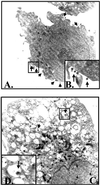Urokinase-urokinase receptor interaction mediates an inhibitory signal for HIV-1 replication
- PMID: 12084931
- PMCID: PMC124389
- DOI: 10.1073/pnas.142078099
Urokinase-urokinase receptor interaction mediates an inhibitory signal for HIV-1 replication
Abstract
Elevated levels of soluble urokinase-type plasminogen activator (uPA) receptor, CD87/u-PAR, predict survival in individuals infected with HIV-1. Here, we report that pro-uPA (or uPA) inhibits HIV-1 expression in U937-derived chronically infected promonocytic U1 cells stimulated with phorbol 12-myristate 13-acetate (PMA) or tumor necrosis factor-alpha (TNF-alpha). However, pro-uPA did not inhibit PMA or TNF-alpha-dependent activation of nuclear factor-kB or activation protein-1 in U1 cells. Cell-associated HIV protein synthesis also was not decreased by pro-uPA, although the release of virion-associated reverse transcriptase activity was substantially inhibited, suggesting a functional analogy between pro-uPA and the antiviral effects of IFNs. Indeed, cell disruption reversed the inhibitory effect of pro-uPA on activated U1 cells, and ultrastructural analysis confirmed that virions were preferentially retained within cell vacuoles in pro-uPA treated cells. Neither expression of endogenous IFNs nor activation of the IFN-inducible Janus kinase/signal transducer and activator of transcription pathway were induced by pro-uPA. Pro-uPA also inhibited acute HIV replication in monocyte-derived macrophages and activated peripheral blood mononuclear cells, although with great inter-donor variability. However, pro-uPA inhibited HIV replication in acutely infected promonocytic U937 cells and in ex vivo cultures of lymphoid tissue infected in vitro. Because these effects occurred at concentrations substantially lower than those affecting thrombolysis, pro-uPA may represent a previously uncharacterized class of antiviral agents mimicking IFNs in their inhibitory effects on HIV expression and replication.
Figures






References
Publication types
MeSH terms
Substances
LinkOut - more resources
Full Text Sources
Other Literature Sources
Molecular Biology Databases
Research Materials
Miscellaneous

